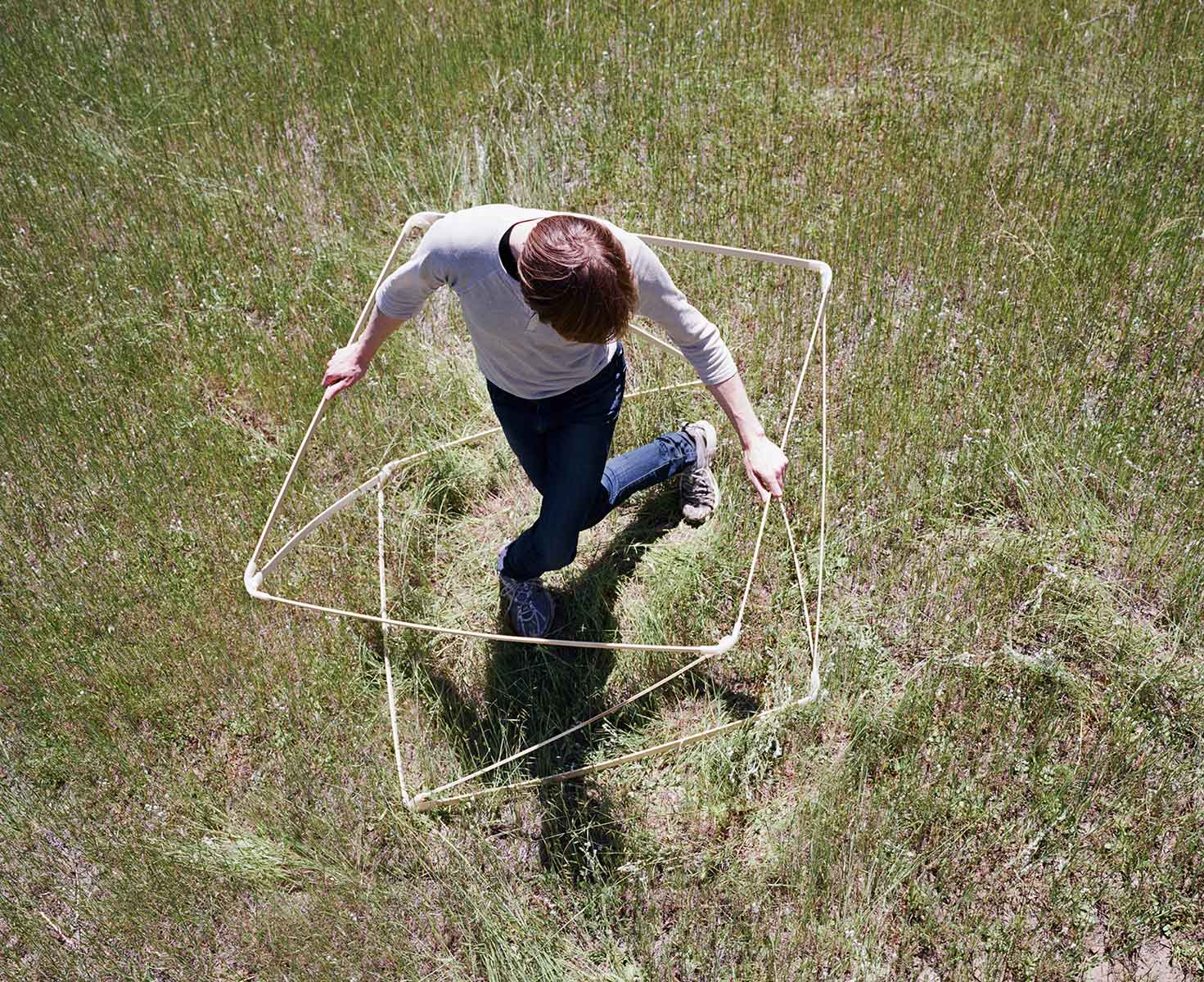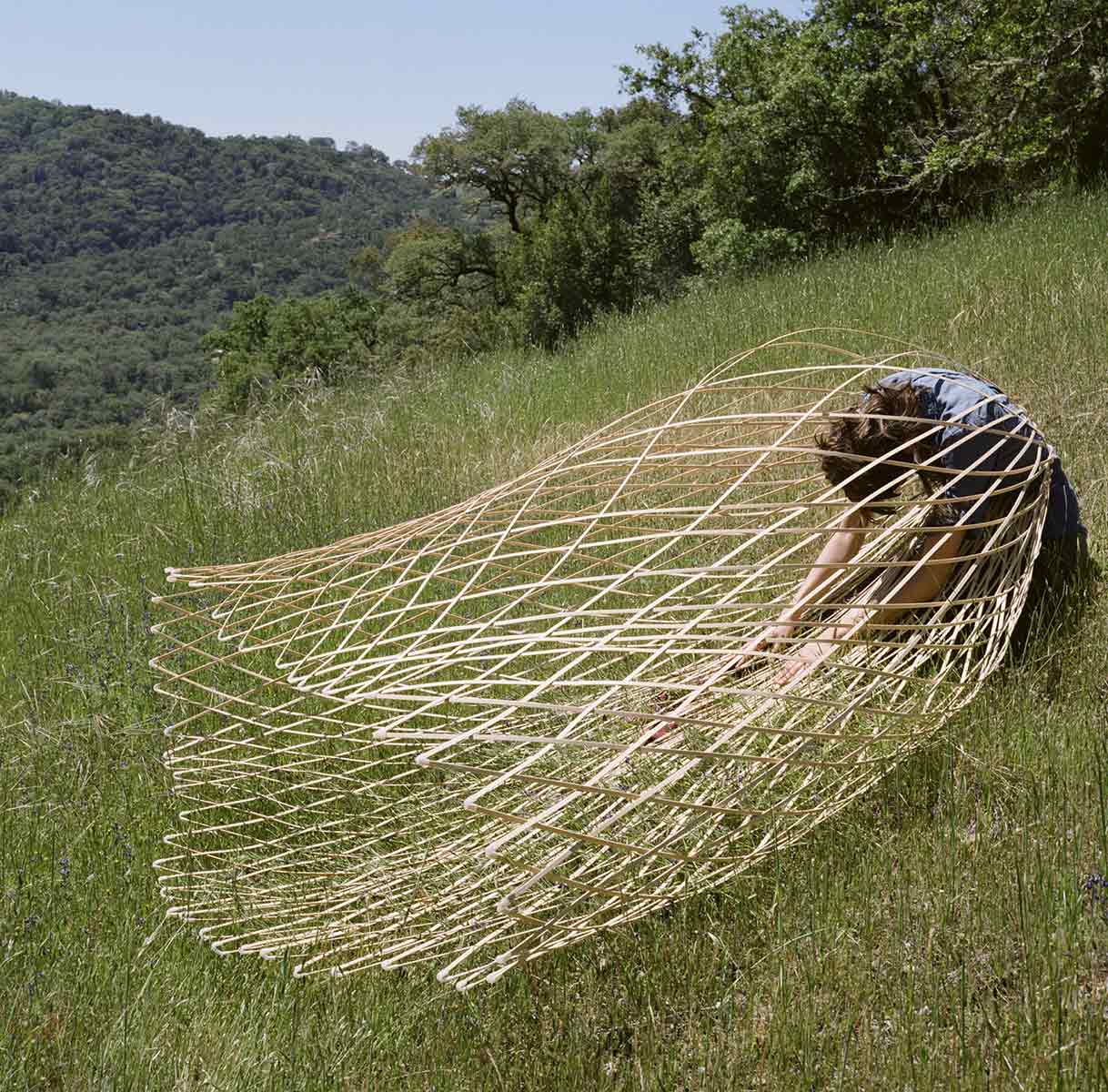- Login
Critical Spatial Practice


An alternative ground for creative practitioners to stand on and ease into. A protected space to open and deepen, extend and enfold, break and unlearn, reformulate and re-root, imagine and evolve. A space of trust and understanding, where pluralism can thrive. A space of poetry and of risk, where unexpected forms and practices emerge. A space of knowing and not-knowing, where new pathways unfold.
In April 2016, Slow Research Lab convened a group of artists, curators, writers, and performers for a weekend retreat to explore the spatial and relational potentialities of Dutch designer Maria Blaisse’s flexible bamboo forms.
For more than 40 years, Blaisse has conducted rigorous, cross-disciplinary investigations of both natural and human-made materials. In her work, form emerges and evolves through research at the intersection of body, material, and context. The Slow research retreat in Ukiah was part of Blaisse’s recent explorations at the scale of architecture, advancing a vision for the human-built environment as something flexible and closer to Nature.
One of the participants was Siobhán K. Cronin, a data scientist with a background in music composition, dance, and neuroscience. (Cronin is the performer in the Vimeo linked video.) She later wrote of the experience: ‘The bamboo forms ask us to move with ‘other’ until our practice of engagement softens our understanding of other. It is not simply that we then see ourselves as one, since our consciousness continues to observe, yet we come to see self and other united in a continuum of forms and transformations. We experience the materializing and dematerializing of form as energy moving through space and time.’
The fruits of the weekend retreat were generative: Cronin later joined us in Amsterdam to present at the international Conference for Complex Systems about the role that design can play in expanding the frontiers of complexity research. There we drew parallels between Blaisse’s inquiry into form, body, energy, and movement with that of Buckminster Fuller (synergetics), Paul Schatz (polysomatic forms), Christopher Alexander (generative grammar), and Viktor Schaumberger (living energies) – with the goal of revealing tangible ways of visualizing possible near-future developments in infrastructure and fluid digital interface, where our natural, constructed, and technological systems co-exist in dynamic, mutually-beneficial interplay.
Slow Research Lab is a multidisciplinary research and curatorial platform offering an alternative space for theory and experimental practice. It operates at the intersections of phenomenology and ecology, mathematics and somatics, language and landscape. Contributing thinkers and practitioners are designers, architects, artists, ecologists, technologists and activists whose experimental, often speculative forms of practice challenge the conceptual, methodological and experiential boundaries of their varied disciplines. Through research residencies, exhibitions, publications, workshops, and academic projects, such collaborators are invited to enter into dynamic, cross-disciplinary processes of dialogue, the artifacts of which range from ephemeral, (im)material experiments to large-scale urban interventions. The platform has collaborated with a range of academic, institutional, and nonprofit partners, including the Canadian Centre for Architecture, Noguchi Museum, Design Academy Eindhoven, and UFRGS Porto Alegre, and Yerba Buena Centre for the Arts. Founded in New York in 2003, a European office, Stichting slowLab Europe, was opened in 2008.
Slow Research Lab initiates interdisciplinary projects that interrogate and respond to unique contexts and/or conditions of the human-built environment. Those ‘in-situ dialogues’ consider the broader ecology and evolving nature of a given site: including continuous unfoldings of material expression, visible and invisible webs of relationship (human/nonhuman, living/nonliving), sensorial and synaesthetic experiences that the site affords, and more. Within such temporary communities of practice, individual and collective desires give way to objects, spatial constructs, performance, sonic intervention, readings, writings, gestures, and actions – valuable not as ends to themselves, but as traces of process and portals to new levels of (mutual) understanding.
Donna Haraway, Staying With the Trouble: Making Kin in the Chthulucene (Duke University Press, 2016)
https://read.dukeupress.edu/books/book/27/Staying-with-the-TroubleMaking-Kin-in-the
Walter de Maria, ‘The New York Earth Room’ (1977) https://www.diaart.org/visit/visit/walter-de-maria-the-new-york-earth-room-new-york-united-states/
Louis Le Roy, ‘EcoCathedral’ (1966 to 3000), Mildam, The Netherlands http://www.spacesarchives.org/explore/collection/environment/louis-le-roy-ecokathedraal-eco-cathedral/



































































